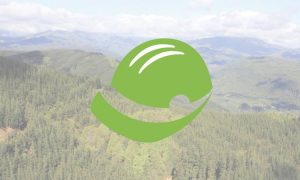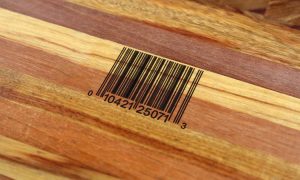 Today, 15 June 2016, FSC will open the third public consultation on the FSC-STD-40-004 V3-0 Chain of Custody Certification standard.
Today, 15 June 2016, FSC will open the third public consultation on the FSC-STD-40-004 V3-0 Chain of Custody Certification standard.
Incorporated into the draft standard is four sections of the FSC-STD-20-011 V4-0 Chain of Custody Evaluations draft standard related to verification requirements for certification bodies. This section describes the rules that certification bodies must abide by when conducting an audit, and can be reviewed at the same time as the draft FSC-STD-40-004 V3-0.
To better assist our stakeholders, we’ll be using a web-based consultation platform to collect feedback. The two documents are open for public consultation from 15 June to 31 August 2016.
There are five main proposed changes in the revised draft of the FSC-STD-40-004 V3-0 Chain of Custody Certification standarddetailed below.
- New transaction verification requirements are proposed that would allow certification bodies to verify FSC transactions between certificate holders. It is suggested that certificate holders would go through a risk assessment that will classify them as being part of either high-risk or low-risk supply chains. Those with a high-risk classification will be required to use theFSC Online Claims Platform (OCP), but for the majority of certificate holders, who would be classified as low-risk, the use of the OCP would be optional – although still recommended.
- A change to multi-site rules that allow multi-site certificate holders to share a) credit accounts and, b) percentage calculations across several sites.
- Refined credit system requirements, including clarifying credit accounting for assembled wood products, and an extension of the credit accounting period from 12 to 24 months.
- Reduce the threshold for FSC-labelled recycled wood products from 85 per cent to 70 per cent (same threshold as required for FSC Mix products).
- A merger of advice notes and standard interpretations will be incorporated into the standard.
For any questions, please contact project coordinator, Lucia Massaroth (l.massaroth@fsc.org).
 FSC director Kim Carstensen explains that achieving sustainable forest management requires understanding that the forest provides far more than the value of its timber
FSC director Kim Carstensen explains that achieving sustainable forest management requires understanding that the forest provides far more than the value of its timber
I start this blog by sharing three stories with you. These are stories that show the true impact FSC certification is having across the world today.
From the camp of Ngombe, in the Congo Basin: it has become a thriving community under FSC certification with a hospital, police station, library and school built for its 8,000 residents.
From the forests of Sweden: Findings from the Swedish National Forest Industry show that, when compared to the Swedish Forestry Act, FSC certification has had a greater impact on biodiversity across the country, creating more conservation areas, woodland habitats, and resulting in increased retention of trees, high stumps where species can live and deciduous forests.
From the WWF: Its new Profitability and Sustainability study shows a clear economic benefit for forestry businesses choosing FSC, as they earn an extra US$1.80 for every cubic metre of FSC-certified timber compared to global averages.
You‘ll notice these stories talk about very different outcomes. But what they have in common is that they use FSC certification to achieve the outcome. This, in my opinion, is the essence ofsustainable forest management.
When I compare this to my first visit to an FSC-certified forest in 1995, the progress we’ve seen has been quite remarkable. This is what makes my role so exciting.
Our job is to ensure a long-lasting future for our forests
This is why for the last 21 years we have used a system of certification, marking certified products with a label containing our FSC logo. The logo gives well-managed forests an identity in the market, showing the commitment to sustainable forest management. It’s been enormously successful, but the system is certainly not without its challenges.
In many parts of the world, forest governance and economic systems provide stronger incentives for deforestation than they do for forest management. This creates degradation and social inequality in some areas, which is a huge blow for us. But how do we solve it?
I have a vision where the forest is recognized for its true value.
This is the value of its timber, but also the value of its carbon storage and biodiversity, its water protection and the homes, food and other resources it offers to communities. In achieving this vision, it’s important to acknowledge that FSC certification is just one of a number of tools that we will need.
In our new global strategic plan, announced this month, we’ve highlighted the need to understand the role of certification within this much wider context.
As part of this, we’ve made four key commitments. We’ve agreed to an increased focus and measurement of outcomes, advancement through alliances, emphasizing the needs of our users and empowering under-represented people.
What this means is we will focus on achieving even stronger outcomes than today by talking to more people about the things that are important to them, and by doing so in terms that make sense to them.
We will work with local communities, Indigenous Peoples, dog walkers, mountain bikers, forestry companies, agricultural plantation companies, local and national governments – everyone who relies on the forest or has an impact on it. By discussing how each of these groups use forests, we can agree what we can do together to achieve our aims.
This is why FSC is more than a certification scheme
The examples I have given are, to me, what sustainable forest management looks like. This is what excites me when I think about what certification can achieve, and it is what assures me that FSC is moving in the right direction.
It is vital that we recognise the value of our standing forests, beyond the monetary value attributed to timber we can take out of them, or the monetary value of the agricultural products that could replace a deforested area. This goal inspires us to make good on our commitments. Through the environmental groups, global businesses, workers, communities and Indigenous Peoples that make up our organization, we can reach mutually beneficial conclusions. We can ensure the forest has a future beyond certification.

